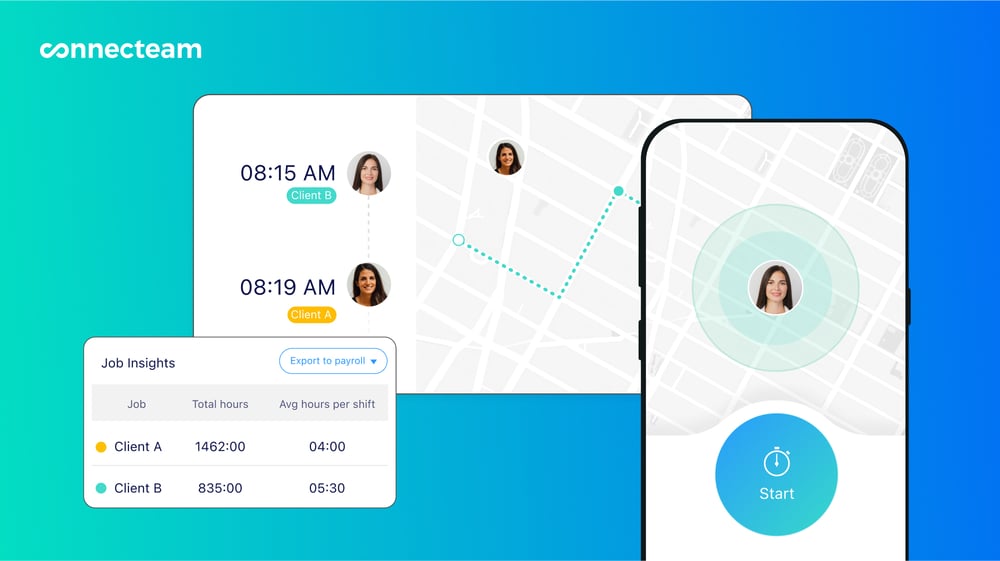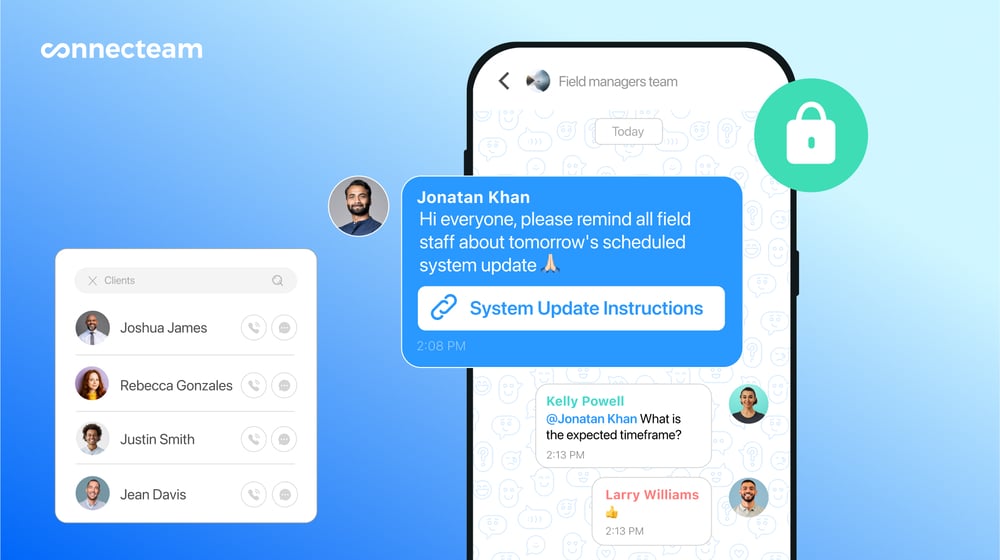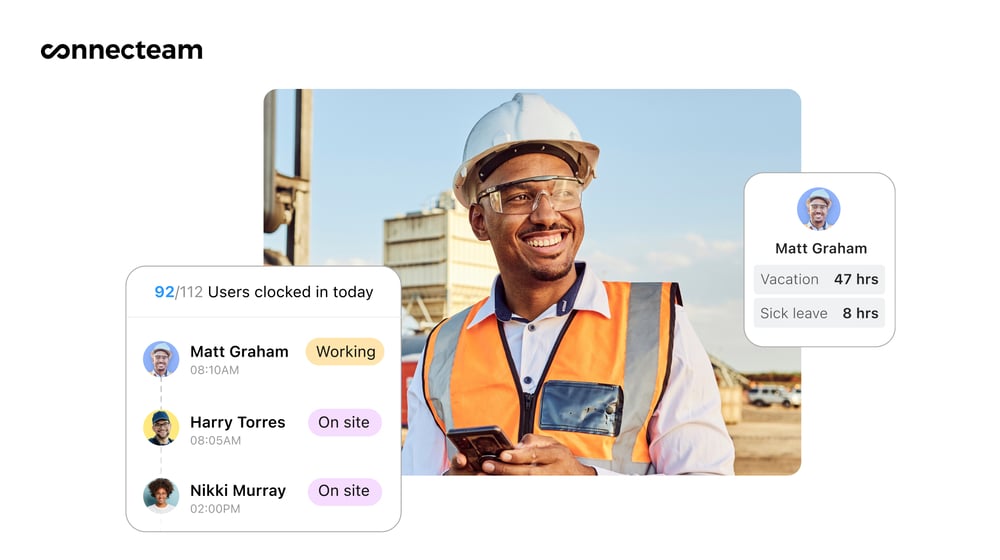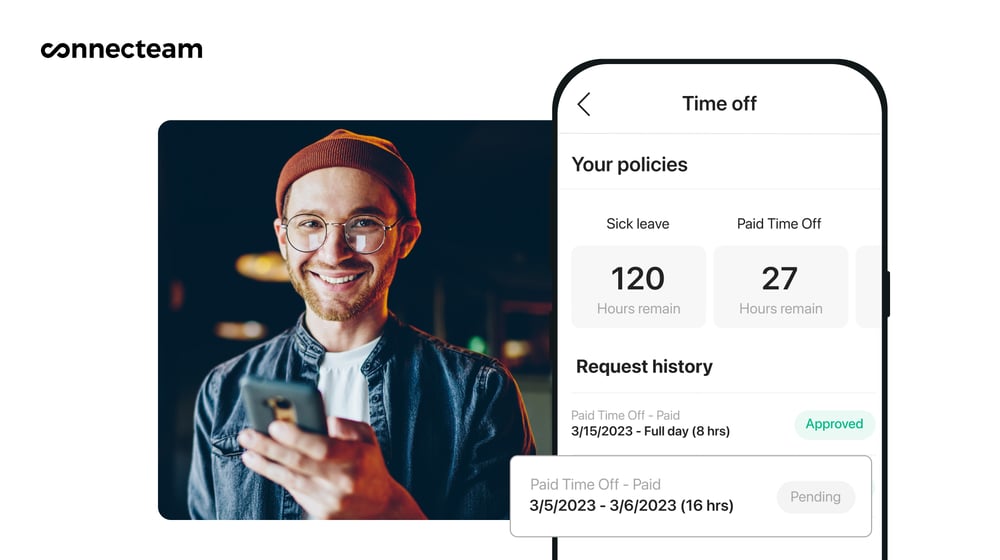Connecteam’s all-in-one, mobile-first platform is ideal for deskless teams. Sling’s purpose-built scheduling platform is sleek and intuitive, but lacks some of the advanced functionality of Connecteam.
Looking to avoid needless headaches while scheduling your team? Various employee management tools promise to simplify scheduling, including Connecteam and Sling. If you pick the wrong one, you’ll have to switch later, which involves lots of hassle for you and your team.
In this guide, I compare them side by side so you can make an informed decision about which is best for your business.
A note about our method: All product comparisons and verdicts in this guide are based on hands-on testing by our expert team. Every screenshot was taken from real use during our evaluation.
At a Glance: Quick Summary
Connecteam is an all-in-one employee management platform combining scheduling, communication, task tracking, and training tools in a single mobile app. After testing it, I think it’s ideal for businesses with frontline or field teams in sectors like construction, logistics, retail, and hospitality.
Sling stands out with its powerful yet easy-to-use scheduling, time tracking, and labor cost control features. In our tests, we found it especially useful for small to mid-sized businesses that rely on shift-based teams, such as restaurants, logistics, and retail operations.
Pricing and Plans
| Plan Type | Connecteam | Sling |
| Free Plan | ✅ For up to 10 users Includes access to all hubs and features | ✅ For up to 30 users Includes access to shift scheduling, time off requests, private messaging, long-term scheduling, and more |
| Starter | Basic $29/month for up to 30 users, +$0.50 per additional user Includes team chat, basic scheduling, time tracking, Quick Tasks, and forms | N/A |
| Pro/Premium | Advanced $49/month for up to 30 users, +$1.50 per additional user Adds kiosk clock-in, GPS, advanced scheduling, advanced task management, geofencing, and integrations | Premium $1.70/user/month Includes shift swaps, overtime tracking, calendar synchronization, and more |
| Next Tier | Expert $99/month for up to 30 users, +$3.00/month per additional user Adds auto-scheduling, unlimited shift tasks, and more | Business $3.40/user/month Adds task management, shift auto-assignment, late arrival, kiosk time tracking, PTO management, payroll reporting, no-shows, and more |
| Enterprise | Custom pricing | N/A |
| * All prices show the monthly cost when billed annually as of July 2025 | ||
Because Connecteam’s platform is so comprehensive, it offers 3 separate hubs: Operations, Communications, and HR & Skills. While pricing is identical across Connecteam, each hub must be purchased separately. The features above all come from the Operations hub—which most closely aligns with Sling’s offering.
Since Connecteam’s free plan includes every feature and hub on the platform, it can be a game-changer for small teams that need an all-in-one solution. I think its base-fee model also makes it a sensible choice for midsize teams.
However, some teams with more than 10 and fewer than 30 users could save by using Sling. Sling is also very affordable for midsize teams needing just operational features like scheduling and time tracking.
Pros and Cons
Connecteam pros ✅
- Comprehensive mobile app: Connecteam’s features are all available on a single mobile app, making it easy for managers to create schedules, manage shift tasks, or chat with employees on the go.
- Automatic scheduling: You can generate optimal shift or job schedules with 1 click. The system accounts for availability, time off, qualifications, shift conflicts, shift distribution, and more.
Connecteam cons ❌
- Scarce third-party integrations: Connecteam prioritizes built-in tools over third-party integrations.
- Limited custom automations: Connecteam provides built-in automations, but it doesn’t natively support custom automations and alerts. Instead, it provides workarounds, like a Zapier integration.
Sling pros ✅
- Free tier for up to 30 users: Sling’s free tier sets it apart from the competition in the scheduling space.
- Automatic scheduling: Sling can also take availability and business information and generate optimal schedules for you.
Sling cons ❌
- Clumsy mobile experience: While Sling’s mobile app provides access to every feature, it’s noticeably harder to use than the desktop version, which can be frustrating.
- Limited customization options: While Sling allows schedulers to view employees by job position and location, you can’t sort them by skills or experience, which can make it difficult to assign the right person to each shift.
Use Cases
Connecteam is best for:
- All-in-one capabilities. With its comprehensive offering, Connecteam offers managers and field employees a simple 1-stop shop for scheduling, communication, time tracking, and more.
- Clean mobile experience: Using Connecteam’s app, employees can effortlessly check their schedules, swap shifts, request time off, check off tasks, upload images or documents, and submit information on their devices while on the job.
Sling is best for:
- No-fuss scheduling. The tool is literally called “Sling Scheduling,” and it’s purpose-built to excel at just that.
- Easy setup. Sling was clearly designed for use by non-technical employees. You don’t need to know anything about IT to get the hang of Sling after just a few uses.
Side-by-Side Feature Overview
Both Connecteam and Sling offer essential scheduling tools, but their handling of time tracking, communication, and other features varies widely. Below, I break down the most important features for field-based and deskless teams and declare the winner in each category.
Scheduling – Winner: Connecteam
Connecteam makes employee scheduling easy with drag-and-drop functionality, templates, and recurring and rotating shifts and schedules. Managers can set regulatory limits to ensure that employees aren’t assigned overtime unnecessarily. Moreover, with the auto-scheduler, you can create schedules with 1 click. You can also publish schedules with a single click.
For employees, Connecteam offers various functions that make picking up shifts simple. For instance, Connecteam offers shift swapping that eliminates long back-and-forth messaging. Similarly, you can give your employees the option to grab open shifts themselves, giving them the flexibility to get more work if they’d like to. Employees can approve or reject shifts in-app.
The app also notifies you if anyone is running late or a no-show so you can make a speedy replacement.
Connecteam doubles as a task management app, so you can easily schedule shift tasks and sub-tasks, attach checklists and other digital forms, and more.
Sling’s scheduling capabilities are also impressive. Like Connecteam, it offers drag-and-drop functionality, automated scheduling, and templates. It also warns supervisors when employees have been scheduled to close up shop one day and open early the next.
One of the features our testers particularly appreciated was labor cost optimization. By displaying expenses in the scheduling interface, Sling makes it easy to make sure you make cost-effective decisions. However, when we tested it, this feature worked only with hourly rates, not day rates.
Sling also offers task management. You can assign tasks to shifts and even add checklists. However, this is available only on the highest plan.
Overall, Sling offers fewer customization options than Connecteam. For instance, supervisors don’t see information about an employee’s skills or experience from the scheduling interface. This can make it difficult to align employee skills with the needs of each individual job.
Time tracking and location enforcement – Winner: Connecteam
With Connecteam, users can clock in and out of shifts and jobs from the mobile app or from shared devices serving as central kiosks. Connecteam has advanced capabilities, like the ability to distinguish between billable and non-billable hours, automatically alert managers when an employee nears overtime, and break reminders. I think this makes it super convenient for employees to use from the field.
Importantly, Connecteam’s employee time clock offers GPS-enabled geofences around job sites. This can help you ensure that your employees only clock in for work when they’re actually at a job site. Should they leave the geofenced area, the app can automatically clock them out.

The system automatically generates timesheets, and both employees and managers can review any duplicate entries, excessive overtime, or missed breaks. These timesheets integrate with QuickBooks, Gusto, Paychex, Xero, and ADP, making it easy to process payroll.
Sling also makes time tracking simple by turning any smartphone into a time clock app. And since it, too, has GPS-based location enforcement, it provides an easy way to verify that employees are actually where they’re supposed to be. That said, its GPS features aren’t quite as advanced as Connecteam’s. While it offers similar geofencing capabilities, it can’t track users’ locations throughout their shifts like Connecteam can.

Sling can automatically end shifts before overtime accrues. I think that’s a great way to help smaller businesses keep labor costs to a minimum. (It’s worth noting that Connecteam can also do this.)
When we tested Sling’s time tracking functionality, we found an issue from the admin side: The mobile app doesn’t display the total number of tracked employee hours. This can make it difficult to check on an employee’s hours when they, for instance, request an extra shift.
Communication – Winner: Connecteam
Connecteam’s team instant messaging includes 1:1 and 1:group chat, so it’s easy to keep people in the loop. Users can upload photos, videos, and attachments, making the service comprehensive. Importantly, employees can set up the app so it only notifies them of chats during working hours. In my opinion, this can help them set a clear boundary between work and private life.

In addition to instant messaging, Connecteam has an updates feed that you can use to share announcements with your team or the entire company. This includes push notifications for urgent alerts, which can help your employees prioritize their messages so they don’t get overwhelmed. I think that the moderation options, which include the ability to choose who can and can’t post, can also come in handy and help ensure that the feed remains work-focused.
Sling also offers communication options, including in-app messaging, announcements, file sharing, and newsfeeds. Taken together, they cover just about every message that an employee or manager may want to send during the day.
At times, I feel that Sling’s notifications can get a bit out of hand. Because there’s no way to mark a notification as “high priority,” employees can sometimes get overwhelmed by a flood of alerts.
Mobile experience – Winner: Connecteam
Connecteam is unique in that it has a full-featured mobile app with every function you can access on the desktop version. I can see that it’s been built for field-based, deskless teams. The app’s intuitive design makes it easy to use and customize features with built-in automations and functionalities.
Importantly, Connecteam’s app isn’t just easy for admins to use. It’s been built with field-based teams like drivers, technicians, and skilled laborers in mind. Their interface requires no tech or administrative skills to work with.

Sling’s mobile app is also intuitive to use. In our tests, we found it easy to navigate, upload documents, and communicate with. I think it does a good job bringing the main desktop features onto iOS and Android platforms. However, it doesn’t include every feature from the desktop version. Reports, employee documents, and activities get left out.
We also found that the mobile version is a little cramped. For more advanced tasks like report management, a bigger screen will come in handy.
Automations – Winner: Tie
Connecteam offers some built-in automation options that can help save time and reduce human error. For instance, Connecteam provides auto-scheduling, automatic reminders, and automatic clock-ins and clock-outs. Similarly, the app will alert managers anytime employees near unauthorized overtime hours and can even clock them out automatically.
Sling also offers some key automations. The tool will auto-schedule employees to help leaders optimize performance. I also like how it automatically flags short turnarounds to ensure that employees who close late at night don’t start too early the next day, which can be an important issue when it comes to complying with labor laws.
However, neither offers fully custom automations.
PTO and time off management – Winner: Tie
Connecteam provides a comprehensive time off management system. Admins can customize leave types (like vacation, sick leave, or personal days), set accrual policies, and apply approval workflows across teams. Employees can easily request time off through the app, view their leave balances, and track the statuses of their requests in real time.
I think that Connecteam’s flexibility sets it apart: You can define region-specific holidays, control whether requests require approvals, and integrate time off tracking with scheduling and payroll reports. It’s designed to scale across complex team structures, which makes it better suited for companies with more nuanced HR policies.

With Sling, employees can request time off directly in the platform, and managers can view, approve, or deny those requests from the same interface they use for scheduling. Sling automatically flags scheduling conflicts if a time off request overlaps with an assigned shift, which is useful.
That said, when we tried it, it didn’t offer detailed accrual tracking or PTO balance management out of the box.
If you’re running a business with straightforward scheduling needs and just want a lightweight tool for approving time off, Sling is easier to pick up and use. But if you need more advanced features, like automated accruals, policy customization, and deeper integrations with HR or payroll systems, Connecteam is the stronger choice.
Reporting & analytics – Winner: Connecteam
Connecteam’s reporting tools let you slice time data by project, location, or employee, which is invaluable for labor cost analysis. The attendance reports are also especially useful and help you spot attendance problems early, and I think this information can be so useful for scheduling.
Reports can be scheduled or downloaded on demand, and the audit trail is clean, which is ideal for teams that need accountability and compliance baked in.
Sling focuses more narrowly on the scheduling side, and its reporting is somewhat lightweight. When we tested it, it seemed fine for spotting scheduling trends or verifying hours, but not much help for analyzing labor costs in depth or reconciling hours across multiple departments.
Bottom line: Sling is a good fit if you need a simple way to review hours and get them to payroll without jumping through hoops. But I think Connecteam wins on flexibility, depth, and audit readiness.
If your organization tracks job costing, multiple locations, or needs to defend timesheet data for compliance or client billing, Connecteam is the better bet.
Labor law compliance – Winner: Connecteam
Connecteam helps businesses stay compliant with FLSA requirements by offering precise time tracking (with GPS and geofencing), mandatory break documentation, overtime calculations, and customizable shift rules. You can set maximum shift lengths, rest period requirements, and alerts for early or late punches.
For industries where minor infractions can lead to serious fines, like construction, security, or food service, these tools aren’t just helpful—they’re essential. You can also assign and track training for legal compliance topics (like harassment prevention or safety protocols), and store employee acknowledgment forms within the platform. Crucially, you can configure Connecteam’s scheduler to qualify certain workers for shifts that require certifications or training. This way, you won’t be able to schedule unqualified workers for these shifts. Connecteam also lets you track qualifications, such as licenses, and input their expiration dates.
Sling, on the other hand, takes a lighter approach. It allows you to track hours, get flags for potential overtime, and restrict availability, but it doesn’t provide the same depth of controls or documentation features needed for full compliance management.
In our tests, we found that there’s no built-in training tracking, no policy acknowledgment workflows, and limited automation around breaks or rest period enforcement. That might be fine if you’re running a small team with predictable hours, but it’s risky for larger or regulated operations.
User Ratings
Connecteam and Sling have similar ratings on both Capterra and G2, but Connecteam has several thousand more reviews than Sling on each site.
Connecteam
Sling
Security & Compliance
| Category | Connecteam | Sling |
|---|---|---|
| Data Encryption | ✅ HTTPS encryption in transit, AES-256 encryption for sensitive employee data at rest | ✅ HTTPS encryption in transit, strong encryption and hashing for PII at rest |
| GDPR Compliant | ✅ | ✅ |
| Hosting Region | US, European Economic Area (EEA), Israel, Australia | US |
| Admin Controls | ✅ (role-based access, audit logs) | ✅ (role-based access, audit logs, least privileges) |
| 2FA Availability | ✅ | ✅ |
| Certifications (SOC 2, ISO, HIPAA) | ✅SOC 2, ISO 27001, HIPAA | ❌ |
Both Connecteam and Sling have good data protection, but after reviewing their certifications and hosting information, I think Connecteam has stronger protections. It holds ISO and SOC 2 certifications and is fully HIPAA compliant. This last certification makes Connecteam a natural choice for any business that needs to comply with healthcare data privacy regulations and include protected health information in their schedules or elsewhere on their scheduling app.
While Sling also claims encryption and GDPR compliance, details on its data hosting and protection protocols are less clear.
Additionally, Connecteam hosts data in multiple regions—including the EEA—supporting companies with strict data residency needs. For teams prioritizing compliance and control, Connecteam offers more clarity and coverage.
Setup and Onboarding
While I didn’t have any trouble setting Connecteam up, it’s worth noting that it has quite a few more features than Sling. With 3 distinct hubs, it tackles employee management issues ranging from scheduling to skill-building.
I think Connecteam can be a bit difficult to customize for a growing business, especially one that needs multiple hubs. Luckily, the company offers a special service that connects clients with Connecteam Pros who help businesses set up their accounts in days instead of weeks.
Sling, on the other hand, is simpler. Most of its features have good functionality, but they tend to lack some of the extra capabilities that come built-in with Connecteam. The upside of this? Sling is a bit easier to set up and get the hang of than Connecteam.
Support and Customer Service
Both Connecteam and Sling offer great multi-channel support.
| Support Type | Connecteam | Sling |
| 24/7 Chat | ✅ | ❌(8 am to 8:30 pm on weekdays and 10 am to 6 pm on weekends, ET) |
| Phone Support | ❌ | ❌ |
| Email Support | ✅ Free and paid tiers | ✅ Free and paid tiers |
| Help Center / Knowledge Docs | ✅ | ✅ |
| Onboarding Support | ✅ (With certified partners) | ❌ |
| Dedicated Account Manager | ✅ (Paid support) | ❌ |
Users generally report a positive experience with Connecteam’s support. Onboarding support is frequently mentioned, as users get a video walkthrough when they first sign up. The tutorials and help center are well-organized and current, so I rarely had trouble finding answers to any questions.
The only downside is that after the initial onboarding, the follow-up can taper off. But businesses can take advantage of the hourly Pros service, and those on the Enterprise plan get their own customer success manager.
Sling’s support is competent but a bit less available, as users can contact live support only during certain hours. When our tester used the live chat, responses typically came quickly. The help center is also well-developed, with clear step-by-step guides and screenshots.
Initial setup support on Sling is minimal unless you’re on a paid plan, and even then, it’s mostly self-serve. There’s not much proactive outreach unless you’re a high-volume user.
🏆 Who Wins: Connecteam or Sling?
| Choose Connecteam if you… | Choose Sling if you… |
| Want a comprehensive, mobile-first platform that puts advanced scheduling functionality in the hands of your field teams and managers. | Want a low-cost scheduling solution for your startup or small business with fewer than 30 employees. |
| Need advanced compliance and security. | Just want a tool that stays laser-focused on scheduling. Sling is purpose-built for shift-based workforces and it ties schedules directly to labor costs. |
| Learn more about Connecteam | Read our in-depth Sling review |
Our take:
If you’re looking for a free option for 11–30 users, go with Sling. It’s fast, intuitive, and does exactly what you need to manage shifts, time off, and labor costs without adding unnecessary complexity.
That being said, Sling does hit a wall fast if you try to do more with it. When you work with teams that need more, like digital forms, training modules, or task management, Connecteam is the better fit. It’s built for managing everything in one place, and that’s a big win for field teams, logistics crews, or anyone juggling multiple workflows.
FAQs
How much is the Connecteam subscription?
Connecteam is completely free for teams with fewer than 10 users. These small teams get access to all features forever. The basic plan starts at a flat rate of $29/month for teams of up to 30 users (if you pay annually), and each additional user costs $0.50/user/month. Month-to-month prices and higher plans with more features cost a bit more.
How much does the Sling employee app cost?
Sling’s employee app is free (with limited functionality) for up to 30 employees. Its Premium plan, which offers more functionality on the employee app, is $1.70/user/month when billed annually, or $2/user/month when billed monthly. Its Business plan costs more and offers more functionality.
Does the Sling app track location?
While Sling doesn’t offer real-time tracking, by using geofencing, it can check users’ locations when they clock in or out to confirm if they’re at a job site.
Does Sling connect with QuickBooks?
Sling doesn’t offer a direct integration with QuickBooks. However, users may be able to connect both apps using third-party automation platforms like Make. Those needing a more direct integration without additional apps or costs should consider scheduling apps with direct QuickBooks integrations, like Connecteam.

